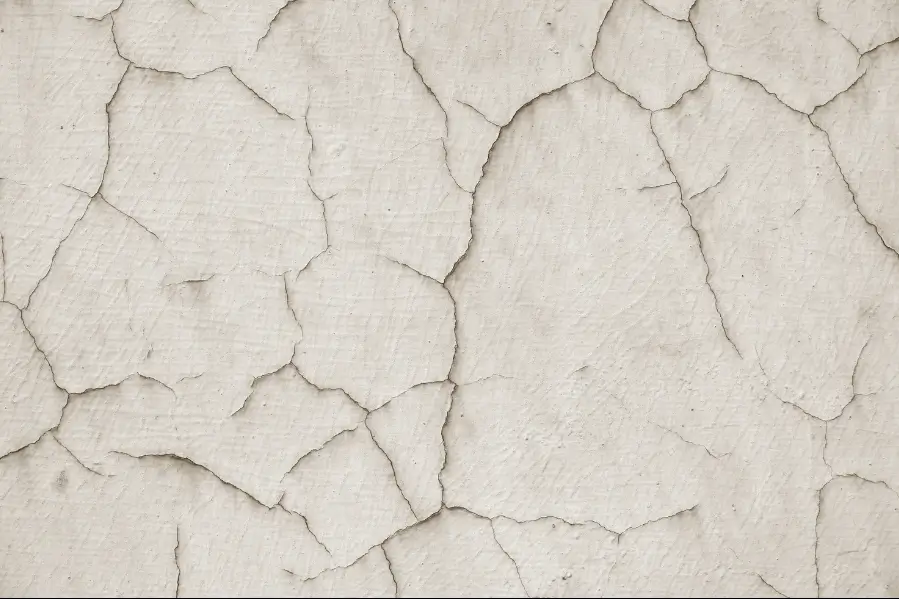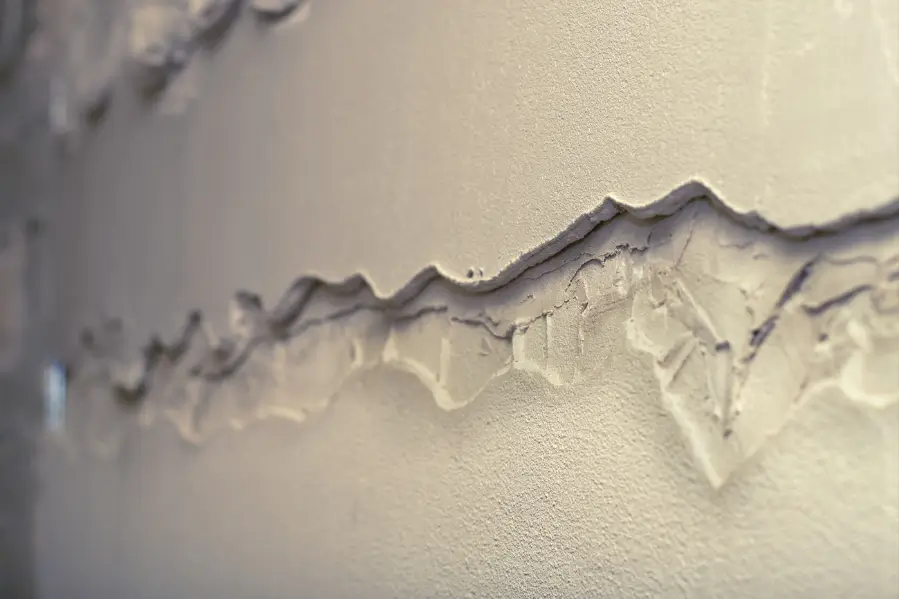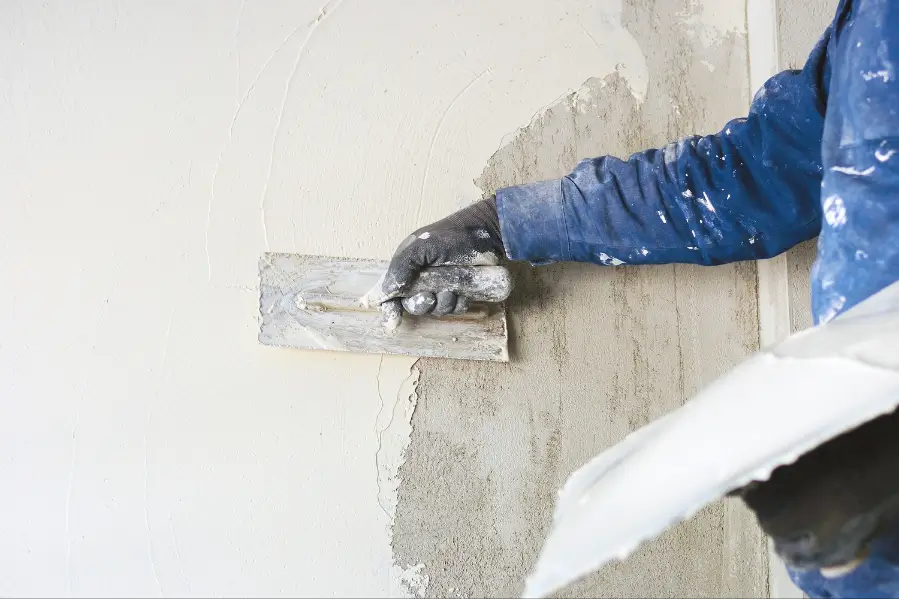Plaster walls in excellent condition are frequently valued by homeowners and prospective buyers. They are strong, beautiful, and especially effective at soundproofing.
However, cracks in plaster walls are normal responses to certain basic changes and environmental changes. Window and door cracks are a common problem in homes with plaster walls.There are a lot of things that can cause cracks in walls, including settling foundations, drastic temperature changes, or even just a simple hit on a wall while moving heavy objects.
Your plaster walls can’t be repaired even if they look bad. In this article we will discuss everything you need to know about cracks, when to be concerned about them, and how to fix them.
Causes of Cracks in Plaster Wall

Walls and ceilings made of plaster can develop cracks due to various factors, each tied to the material properties of plaster, environmental conditions, and structural influences.
Understanding these causes helps in accurately diagnosing and addressing the issue. Here are six common reasons why plaster walls may crack:
1. Movement of the Structure and Settlement
The settling of the foundation can cause small shifts and movements in a structure as it ages. Even a minor movement like this one can put stress on the plaster, which can cause cracks. Plaster cracking can also be brought on by structural changes like building additions or modifications that introduce new stresses.
2. Variations in temperature and humidity
Plaster is affected by changes in humidity and temperature. Plaster can expand and absorb moisture when the air is humid. In contrast, in dry conditions, it may contract and lose moisture. The plaster experiences stress as a result of these regular cycles of expansion and contraction, which frequently result in the formation of cracks over time.
3. Poor methods of application
Cracking can also be significantly caused by improper plaster application. It’s possible that the plaster mix won’t stick to the substrate as well if it’s not properly prepared or applied in one coat too thickly. Additionally, weak spots that are prone to cracking can be the result of inadequate curing time between layers or poor bonding to the underlying material.
4. External and Internal Vibrations
Plaster walls can be stressed by external factors like vibrations from nearby construction activities, heavy traffic, or even everyday household activities like smashing doors. Cracks can form as a result of these frequent vibrations over time.
5. Shrinkage
As it dries, plaster naturally shrinks. The shrinkage can be more pronounced, leading to cracks, if the plaster mix has too much water in it or dries too quickly due to high temperatures. Plaster surface cracks often appear as a result of this.
6. Age
The plaster’s integrity is influenced by its age. Older plaster may lose its elasticity and brittleness, making it more likely to crack under stress. Cracks can develop as a result of decades of consistent use and abuse.
Tools and Materials for Crack Repairing
Plaster wall cracks can only be repaired effectively and visually with a variety of specialized tools and materials. To patch plaster cracks, you need the following tools and materials:
- Utility Knife or Scraper: These are necessary tools for filling good adhesion to a firm surface by expanding and cleaning out cracks to remove any loose or splitting material.
- Putty Knives: Putty knives are used to apply plaster or filler into cracks. They are available in a range of sizes. For smaller cracks, a narrower knife can be used; for bigger regions, a wider knife works better.
- Sanding tools: such as sandpaper or sanding blocks, are essential for uniting the repaired area with the surrounding wall once the filler has dried and smoothing its surface.
- Brush or Vacuum: Prior to applying any filler, the cracks and their surroundings need to be cleared of dust and debris using a brush or vacuum.
- Mixing Bucket and Stick: To get the proper consistency when working with powdered filler or plaster, a strong mixing bucket and stick are required.
- Selecting Filler: Select the right filler according to the size and depth of the crack. Plaster is more appropriate for larger or deeper repairs, while joint compound is best for tiny cracks. Another excellent choice that is frequently used to fix holes, cracks, and other flaws in plaster is water putty.
- Fiberglass Mesh Tape: This tape strengthens the repair and keeps the crack from reoccurring when it comes to broader or structural cracks.
- Primer: A primer ensures uniformity in texture and color and effective paint adhesion by preparing the repaired area for painting.
- Paint: Choose a paint that complements the color and finish of the wall to ensure that the repaired area blends in perfectly with the surrounding wall.
Plaster wall crack repairs must be done correctly to ensure that the repair is both practical and aesthetically beautiful. This requires having the necessary equipment and supplies.
Step-By-Step Guide For Repairing The Cracks in Plaster Wall

Repairing cracks in plaster walls can restore both the appearance and integrity of your space. This simple, step-by-step guide will walk you through the process of cleaning, filling, and finishing cracks to achieve a smooth, seamless look.
1. Clean the Crack and Gather Your Supplies
To create a V-shaped groove, slightly enlarge the crack with a utility knife. This ensures good filler adhesion. Using a brush or vacuum, clear the crack and its surroundings of any loose dust or debris. Make sure you have all the materials you need on hand and prepare the filler you have selected for your plaster restoration project.
2. Cut the Paper Drywall Tape
Measure and cut one or more lengths of paper drywall tape to fit the crack. Because drywall compound dries quickly, cutting the tape ahead of time speeds up the process and reduces the chance of accidentally causing wrinkles or folds. To cut the tape, use a utility knife or scissors; tearing the tape by hand will result in an uneven or rough end.
3. Distribute the Joint Compound
As required, blend the joint compound for drywall. With a 6-inch drywall knife, remove a tiny piece of the crack and create a route that is slightly wider than the paper tape by applying a thin layer of joint compound over it. Since the joint compound dries quickly, go straight to the next step.
4. Put Tape in the Crack
Hand-lay the tape onto the crack, then use the 6-inch knife to smooth it in one or two swipes. The tape should be flattened and fully in touch with the compound, free of wrinkles and air pockets. Take care not to strain or rip the tape. Allow the joint compound to fully dry.
5. Mud on the Tape
Using the 6-inch knife, spread the joint compound over the taped area until it reaches past the edges of the tape. Smooth the compound out to make it flush with the surrounding surfaces. Allow the joint compound to dry fully.
6. Sand the repair and clean the area
To minimize noticeable ridges or bumps, lightly sand the compound using sandpaper or a sanding sponge. Avoid sanding the tape too much as this could reveal it. Clean the patch and its surroundings, then wipe it off with a dry cloth.
Tip: To make the repair blend in, use a texture spray to match the wall or ceiling. You can also create texture by dabbing drywall compound with a sponge or brush. Remember to prime before painting for a smooth finish!
When to Seek Professional Help
When it’s time to refresh or restore your space, Smart Remodeling LLC offers a full range of remodeling services for both homes and commercial properties. Our skilled team can tackle everything from structural repairs and wall restorations to complete room makeovers and customized updates that enhance functionality and aesthetics.
Whether you’re upgrading a single room or overhauling an entire commercial space, we ensure top-quality workmanship and a seamless finish to elevate your environment.
Final Words
In conclusion, plaster crack repair is an easy procedure that can preserve the integrity and aesthetics of your walls. To choose the best repair technique evaluate the crack’s size and type. Sanding and patching compounds are frequently enough for tiny cracks. It can be required to reinforce larger or more severe cracks with mesh tape and several layers of joint compound.
Before painting, make sure the area is always clean and primed for a smooth, long-lasting finish. Plaster wall repairs can be done successfully and future damage can be avoided with the correct tools and perseverance.






